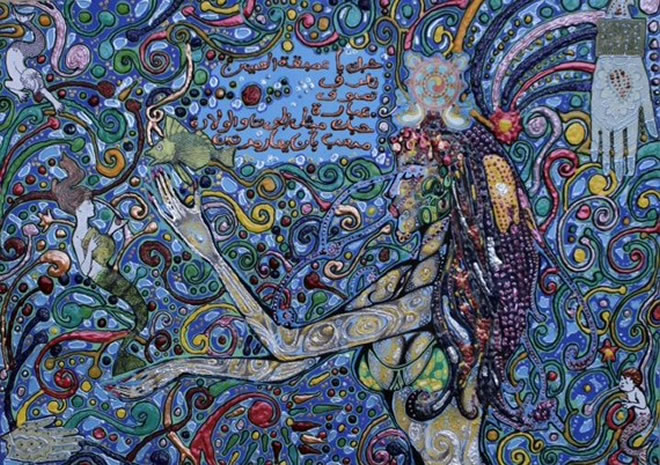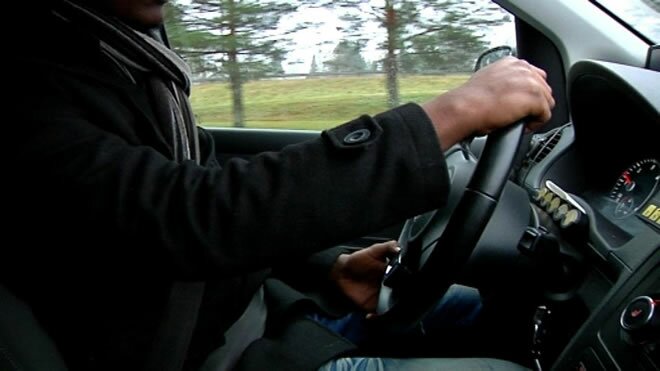How Art Can Save a Life
By Diriye Osman
I’m sitting here feeling worn and scratched — a vinyl record that has seen better days. I’ve grown accustomed to this feeling. Oftentimes, it is accompanied by days of lying in front of the television, blanket over my head, as the latest comedy on Netflix echoes around my living room. Sometimes the most innocuous, chirpy song on the radio has the capacity to make me cry. In those moments of quiet desperation I often ask myself, ‘Where did this sadness come from? When did this pervasive emotionality seep into my system and, more importantly, how do I stem it?’
Manic depression — or bipolar disorder — is like racing up to a clifftop before diving headfirst into a cavity. Maintaining a healthy lifestyle is the psychic equivalent of an extreme sport. The manic highs — that exhilarating rush to the top of the cliff — make you feel bionic in your hyper-energized capacity for generosity, sexiness and soulfulness. You feel like you have ingested stars and are now glowing from within. It’s unearned confidence-in-extremis — with an emphasis on the con, because you feel cheated once you inevitably crash into that cavity. I sometimes joke that mania is the worst kind of pyramid scheme, one that the bipolar individual doesn’t even know they’re building, only to find out, too late, that they’re also its biggest casualty.
When I was a child, my family and I fled from Mogadishu, Somalia, during the civil war and relocated to Nairobi, Kenya, a move that had a profound multi-edged effect on my childhood. Kenya was peaceful compared to Somalia, but that sense of peace was disrupted in a tight-fisted, mean-spirited manner by the Kenyan authorities. Somalis were branded on arrival as unwelcome, second class citizens. As a result, the Kenyan authorities were constantly rounding up Somalis and sending them off to desolate refugee camps, and the only way to escape this fate was to pay hefty bribes, whether you were a legitimate citizen or not. This witch hunt created an atmosphere of fear and paranoia that followed Somalis from the kiosk to the classroom. I remember being petrified to step outside the school gates as a kid in case I was carted off by the police to a refugee camp.
Life behind the school gates posed its own problems. I was an effeminate gay kid who was constantly being ripped to shreds by bullies for being feminine and for being a Somali. I drew into myself and disassembled my sanity and sense of identity like a matryoshka doll.
Salvation came in the form of art. I had always loved painting and my parents were proud and supportive. Inspired by fashion magazines, Alphonse Mucha and Gustav Klimt, I drew androgynous women in sultry outfits and souped up stances. As I honed my skills, the art fizzed with a fantastical, psychedelic exuberance. I was a repressed gay teenager, and these images — and the act of creating them — helped me to externalize my dreams and desires without fearing denunciation. These beautiful, nymph-like characters became proxies that inoculated me from the painful drudgery of my daily life. When I painted, I was powerful. Nothing else mattered. Everything I valued most about who I was and where I was coming from bled onto the canvas.

(‘THE GODDESS COMPLEX — Aquatic Arabesque’ by Diriye Osman).
All that changed when, at the age of seventeen, my family and I immigrated to London. I was excited about exploring my sexuality in a city where being gay was an acceptable part of the cultural landscape. I was amped for adulthood, and no longer felt I needed the safety net of making art to map out my desires and hopes for the future. My life-long guilt and repression, however, split my selfhood into wildly opposing polarities: the asexual, mysterious vault crammed with secrets to appease my Muslim family, and the hedonistic, sexually adventurous man who danced and drank and made mad, intense love. These polarities — coagulated fear and shame versus freewheeling youthful energy and passion — were headed towards a collision that ultimately resulted in a psychotic episode followed swiftly by hospitalization in a psychiatric unit.
During that period of time I abandoned making art altogether. I mistakenly associated making art with my manic depressive symptoms when in fact art allowed me to delve into my subconscious and exorcise my demons. It took ten years before I could pick up my paintbrush again and come back to my first creative love.
As I sit here and write this, feeling scratched and worn — a vinyl record that has seen better days — I know all is not lost. I know I will wake up in the morning, make a cup of tea and sit at my studio desk. I know that at first I will feel antsy and on edge at the prospect of sitting down for eight straight hours working on a painting. I also know that after the first thirty minutes of painting, something miraculous will happen. I will stop thinking and slip into a deep, meditative trance. It’s akin to learning how to breathe underwater.
During those eight hours of painting a day I know that my mania, my depression, my frustrations and anger will dissipate and I will come face to face with who I really am. I know that I will not be afraid or look away from my interior reflection. There will be no joy, no exuberance, no melancholy: just an understanding and the purest form of self-acceptance. I know that making art will keep me alive even when, in moments of undiluted self-destruction, my first instinct will be to step in front of a speeding train. I know that art can save lives because it has saved mine on numerous occasions. The thought alone fills me with comfort, joy even, at the prospect of daybreak.
Diriye Osman is a British-Somali short story writer, visual artist, essayist and critic. His acclaimed collection of short stories, ‘Fairytales For Lost Children’ (Team Angelica Press) can be purchased here. He is currently at work on a long-term series of paintings about the link between cultural identity, fairytales and sexuality. You can visit his websitewww.diriyeosman.com to explore his short stories, photography, visual art, videos, audio recordings and essays.
This article was originally published in Huffington Post
Comments
comments
 Calendar
Calendar





































